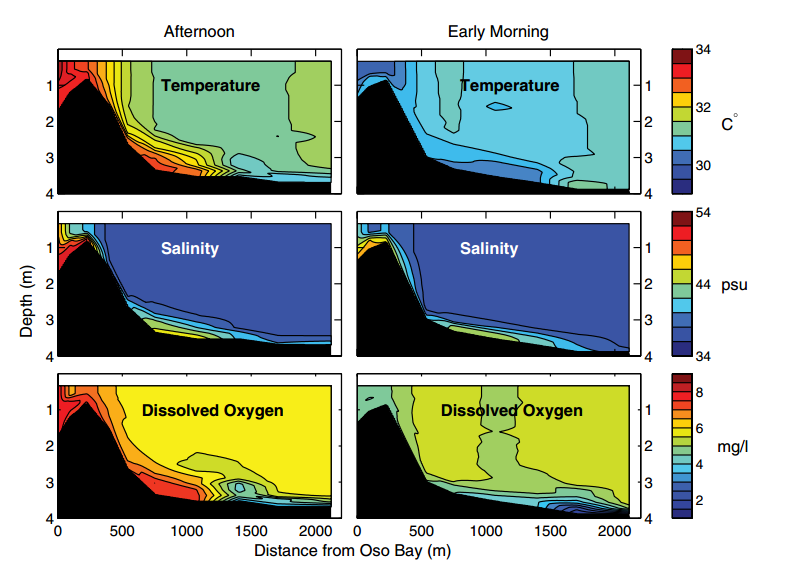Case Study: A thin-layer gravity current with implications for desalination brine disposal
ABSTRACT: Measurements of stratification and dissolved oxygen (DO) illustrate a hypersaline gravity current with salt loads similar to a desalination plant brine discharge. Over a 48-h sampling period in August 2005, alternating cycles of high- and low-temperature hypersaline water were observed along the bottom of Corpus Christi Bay in Texas, coincident with low benthic DO and tidal flushing from an adjacent smaller bay. The gravity current underflow was typically less than 10% of the overall water depth. Strong salinity gradients prevented wind-mixing of the entire water column. Hypoxic and near-hypoxic conditions were associated with limited DO replenishment from the ambient water. High DO levels in the underflow source water did not deter the development of offshore benthic hypoxia. A quasi-Lagrangian analysis is used to evaluate the relationship between ambient mixing and lateral mixing within the underflow. The analysis is further applied to estimating DO demand rates in the hypersaline plume. Mixing between the ambient water and the underflow predominately occurs over the sloping bay boundary. Once the gravity current reaches the flatter section of the bay, mixing is substantially reduced and DO is progressively depleted at the bottom. The transit time of the underflow (i.e., residence time or isolation time for water near the bottom) and wind-mixing energy appear to be key factors governing stratification persistence and potential hypoxia development. The observations and analyses provide insight into possible fate, impacts, and open questions associated with similarly scaled salt loadings from a desalination plant into a shallow bay.
EXTRACT: Figure 6.

Fig. 6. Typical contours of temperature, salinity in practical salinity units (psu, roughly equivalent to parts per thousand), and DO developed from 10 profiles for transect T2 (afternoon) and transect T8 (early morning) as described in materials and methods

